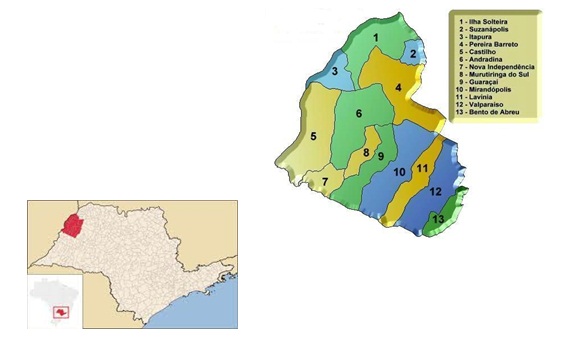Population of hematophagous bats in the Andradina region, São Paulo: roost and control characterization
DOI:
https://doi.org/10.21708/avb.2018.12.2.7532Resumen
The present study quantified Desmodus rotundus population and characterized their roosts in the Andradina microregion, Sao Paulo, Brazil, in 2010 and 2012, determining the effect of bat control measures on roost numbers and types and their population. From April to June 2010, professionals from the Agriculture and Livestock Defense Coordination of the State of Sao Paulo responsible for the rabies control that consists of capturing and treating vampire bats with a vampiricide paste based on Warfarin 2%, inspected 50 bat roosts registered in 12 municipalities in the Andradina microregion, northwestern São Paulo. In September 2012, 31 of these roosts were again surveyed by the authors of this study. The vast majority (92% and 96% in 2010 and 2012, respectively) of the roosts were characterized as artificial, e.g., abandoned houses and warehouses, house attics, culverts under highways, deactivated wells and mills, bridges, disused housings, and barns. The only natural roosts found were tree hollows. The number of roosts and the bat population in roosts decreased drastically after the measures for direct control of hematophagous bats were performed, especially the number of maternity colonies, indicating that the direct selective method had a strong impact on reducing these populations.
Descargas

Descargas
Publicado
Número
Sección
Licencia
Autores que publicam na Acta Veterinaria Brasilica concordam com os seguintes termos: a) Autores mantém os direitos autorais e concedem à revista o direito de primeira publicação, com o trabalho simultaneamente licenciado sob a Licença Creative Commons Attribution que permite o compartilhamento do trabalho com reconhecimento da autoria e publicação inicial nesta revista. b) Autores têm autorização para assumir contratos adicionais separadamente, para distribuição não-exclusiva da versão do trabalho publicada nesta revista (ex.: publicar em repositório institucional ou como capítulo de livro), com reconhecimento de autoria e publicação inicial nesta revista. c) Autores têm permissão e são estimulados a publicar e distribuir seu trabalho online (ex.: em repositórios institucionais ou na sua página pessoal) a qualquer ponto antes ou durante o processo editorial, já que isso pode gerar alterações produtivas, bem como aumentar o impacto e a citação do trabalho publicado (Veja O Efeito do Acesso Livre).


 Esta obra está licenciada com uma Licença
Esta obra está licenciada com uma Licença 